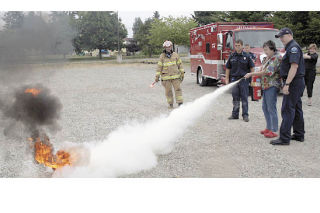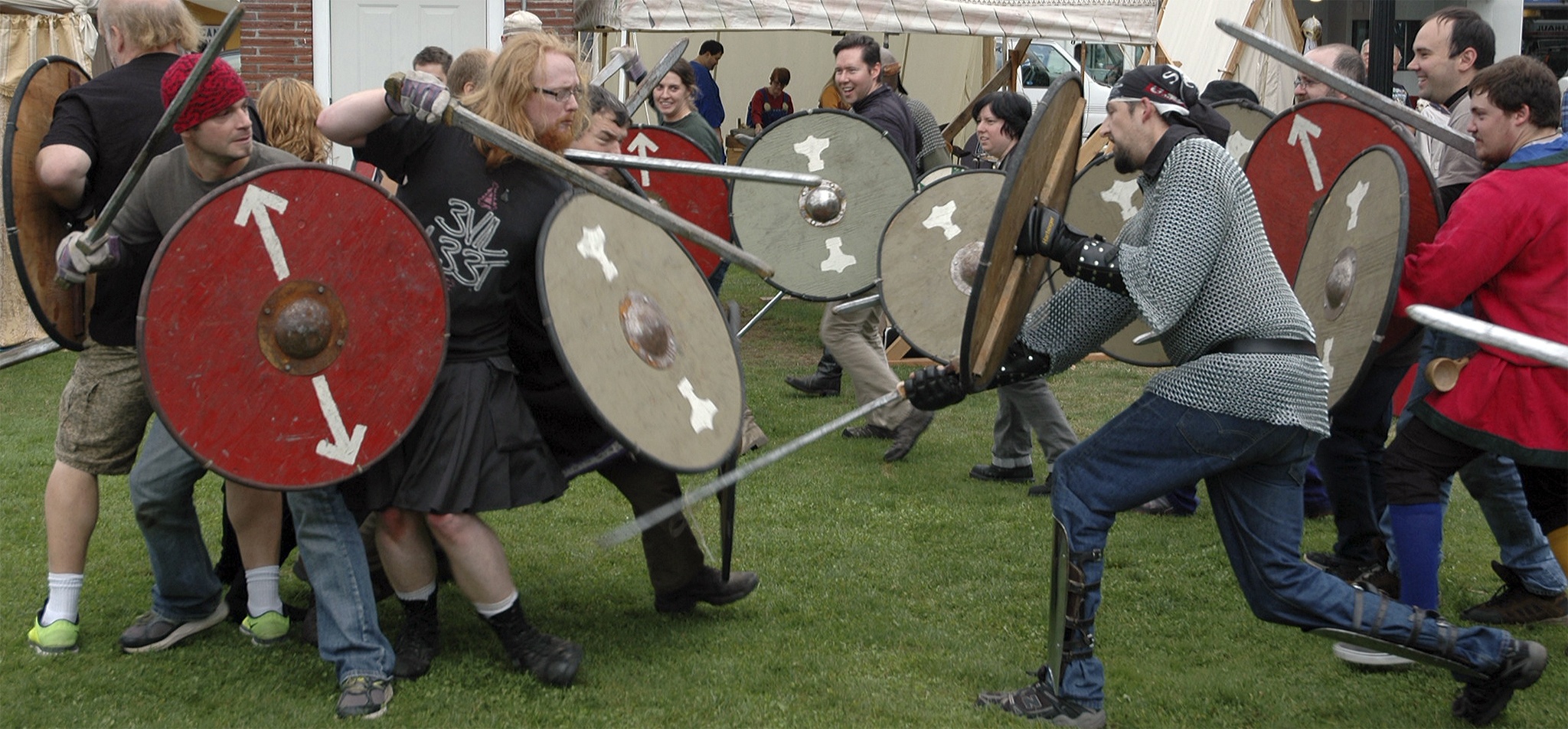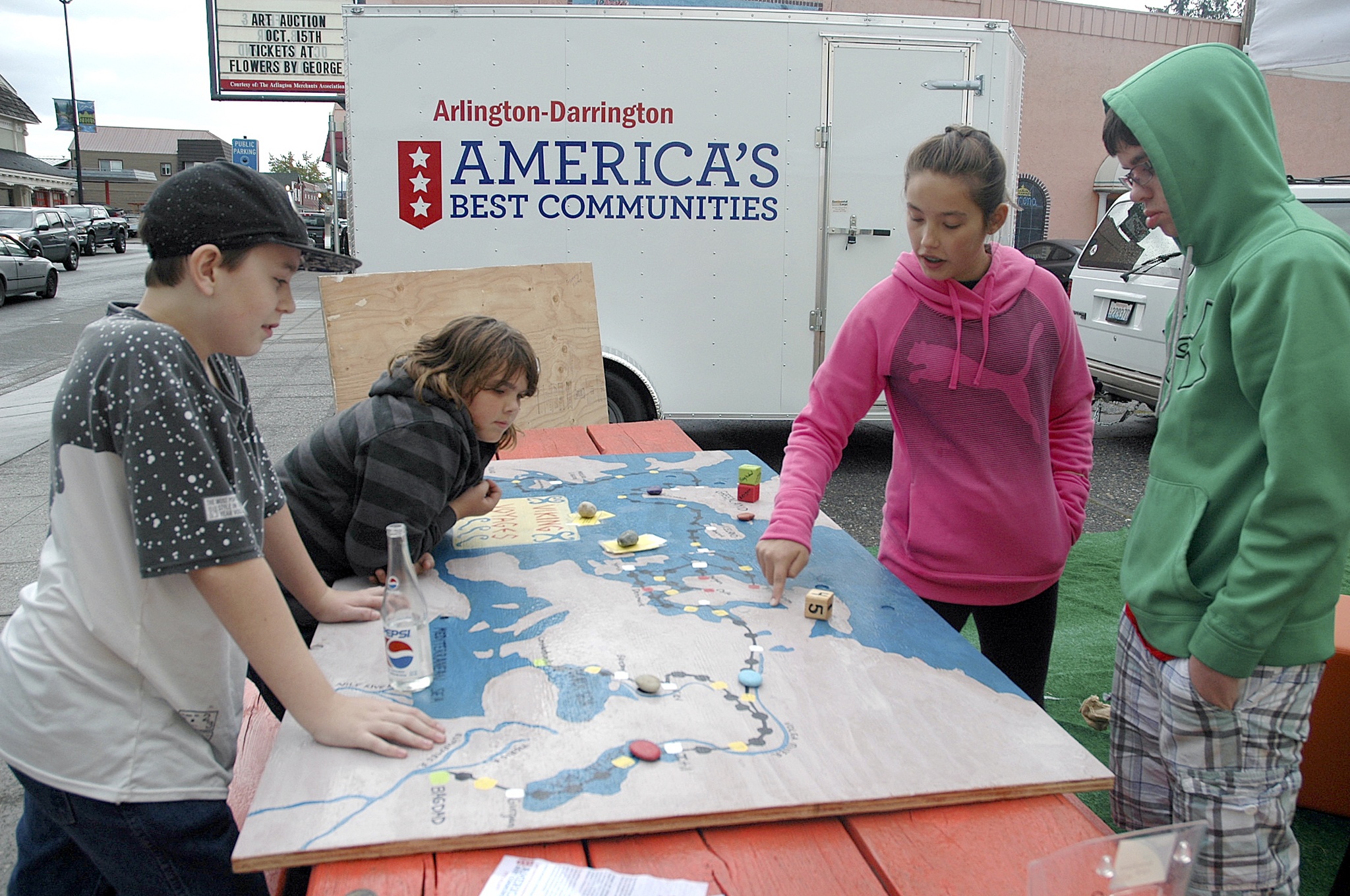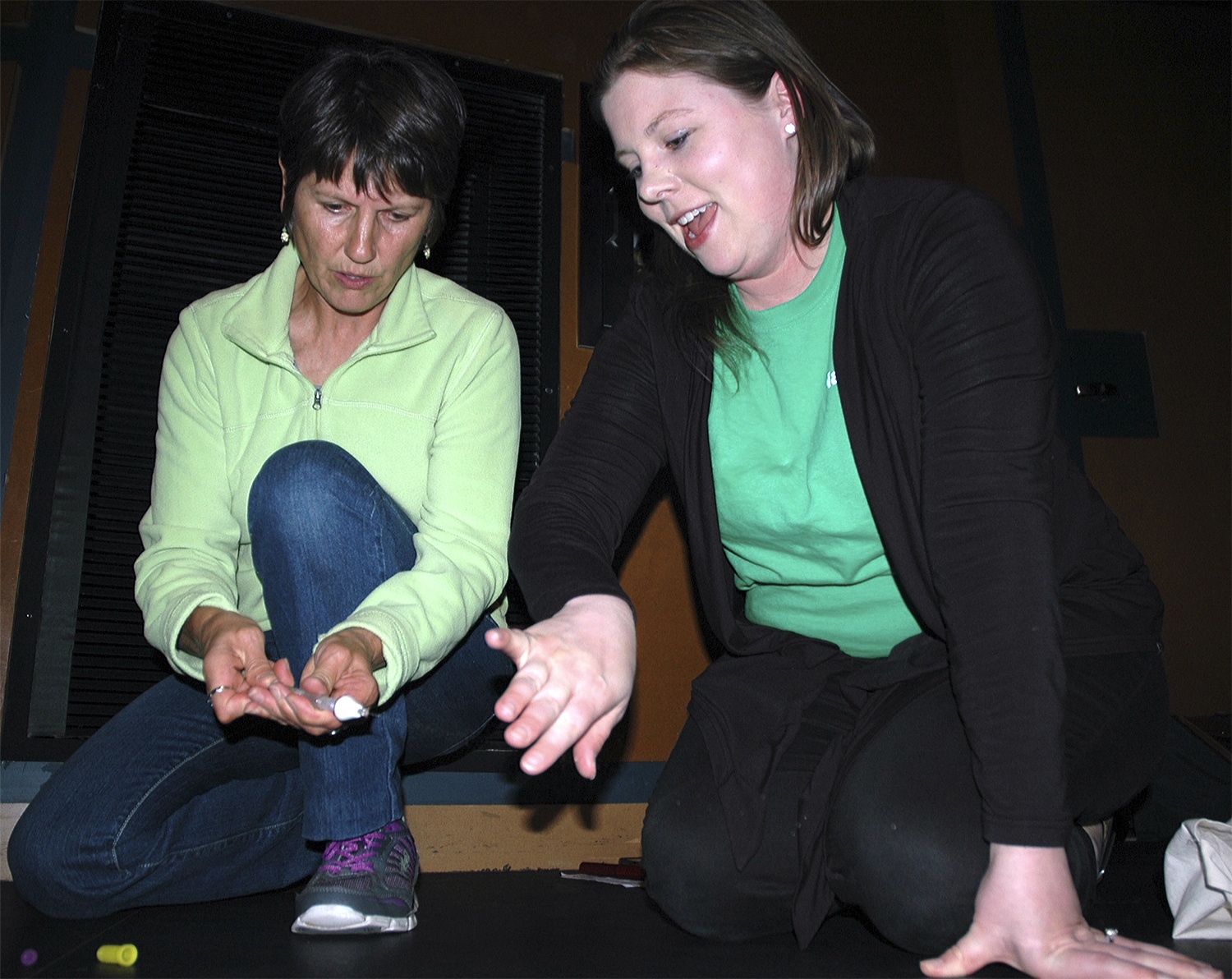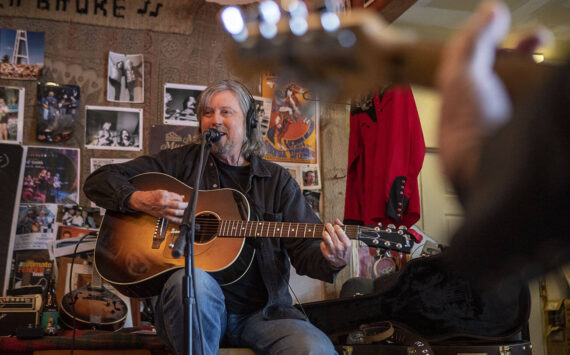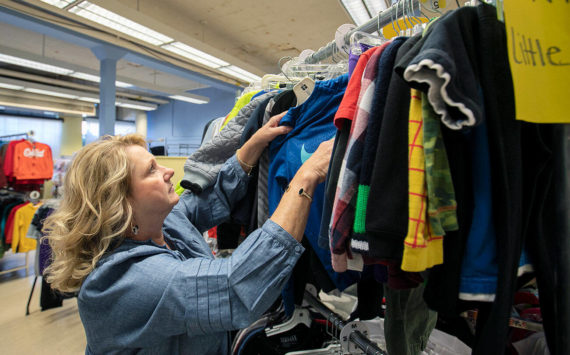ARLINGTON — Downtown Arlington merchants received hands-on training on the proper use of fire extinguishers from local firefighters at Haller Middle School July 22.
With two fire vehicles standing by, Steve Williams and Scott Hillis were among the firefighters who used otherwise unserviceable fire extinguishers to train business owners and staff, including Jeanne Watanabe, Carla Lowe and Barbara Jones, on how to operate and maintain fire extinguishers, at work and in their homes.
Williams explained that fires are classified as one of three types: “A” for combustibles, such as wood and paper; “B” for fuels, such as gas, oil, diesel or grease; and “C” for electrical.
He added that there are three different types of fire extinguishers, as well.
“Most extinguishers are the ‘ABC’ canisters, which means they can take care of everything,” Williams said.
“The silver canisters contain water with additives, and they’re good for putting out grease fires. You can tell the CO2 canisters by the big horns they have, and they shoot out cold air to remove oxygen from the fire. They’re good for electrical fires, where you don’t want to use water.”
Many merchants were surprised to hear that canisters should be serviced and refilled every year, and replaced every couple of years, but were reassured to learn that heat does not affect the canisters.
Hillis warned the business owners and staff to expect that the powder in “ABC” extinguishers will ruin all electrical parts it’s sprayed on, and that the powder can collect and congeal at the bottom of the canisters, which is one reason why it’s important to service and replace extinguishers so often.
Hillis then set a small, contained fuel fire in the middle of the large gravel lot outside the school, as Williams instructed the merchants on how to handle fire extinguishers through “PASS” — Pull the pin, Aim the nozzle, Squeeze the trigger, and Sweep the nozzle back and forth, while moving forward from a starting position of approximately 10 feet away from the fire.
Williams noted that such canisters contain more than enough extinguishing material to put out a simple grease fire, and demonstrated this by dousing the fuel fire with a quick burst from one of the smaller canisters.
“We call it ‘the fire triangle,’” Hillis said.
“A fire requires heat, oxygen and fuel, and if you remove one of those, you can’t have a fire. Lately we’ve started calling it ‘the fire tetrahedron,’ because the fourth ingredient is the chemical reaction itself.”
As the business owners and staff practiced putting out the fire on their own, the firefighters guided them on aiming the extinguishers’ sprays toward the base of the fire, since shooting into the flame can actually add volume to the fire. Firefighters also cautioned them never to turn their backs to a fire, even when backing away from it.
“Only try and put a fire out yourself if it’s small enough,” Hillis said.
“Even if you do, call 911 first, because even if it looks like it’s out, it could still be burning.”
